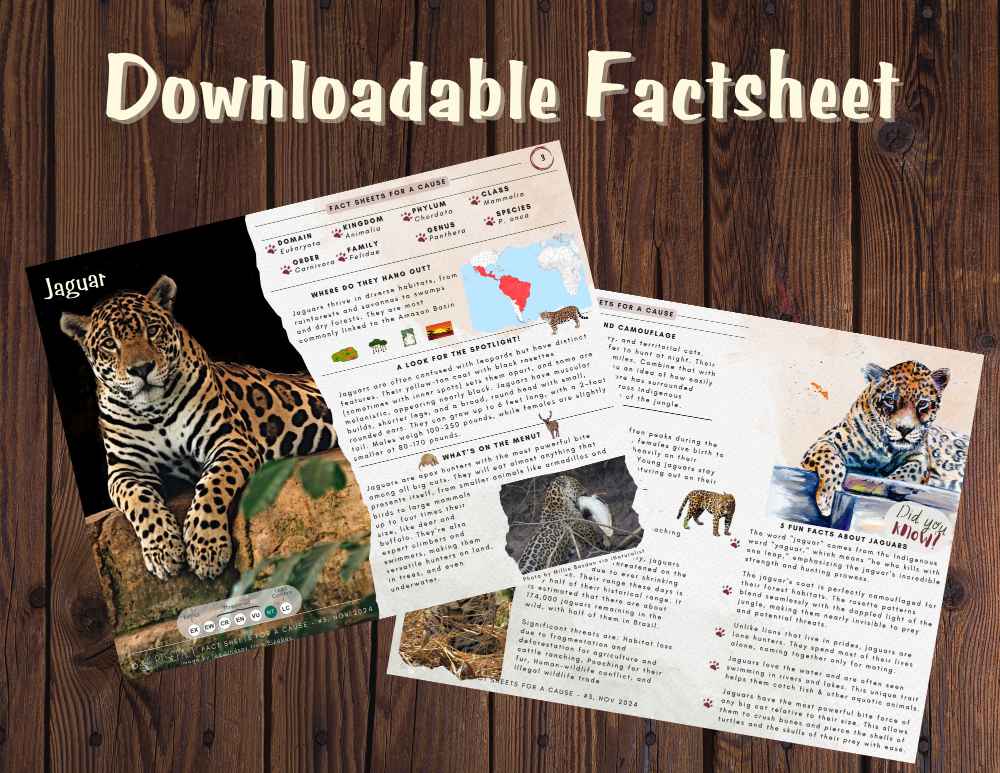
Meet the Jaguar!
The jaguar (Panthera onca) is one of the most iconic and powerful big cats in the Americas. With its famously bold rosette-patterned coat and muscular build, the jaguar roams the dense rainforests and swamps from northern Mexico to northern Argentina. Known for their stealth and incredible strength, jaguars are the true king of the jungle. This apex predator can be found in everything from car brands to major sports mascots. But what is going on with this stealthy strider in the real world?
Scientific Name: Panthera onca
Phylum: Chordata
Order: Carnivora
Genus: Panthera
Kingdom: Animalia
Class: Mammalia
Family: Felidae
Species: P. onca
IUCN Redlist Status:

Table of Contents
A Look for the Spotlight!
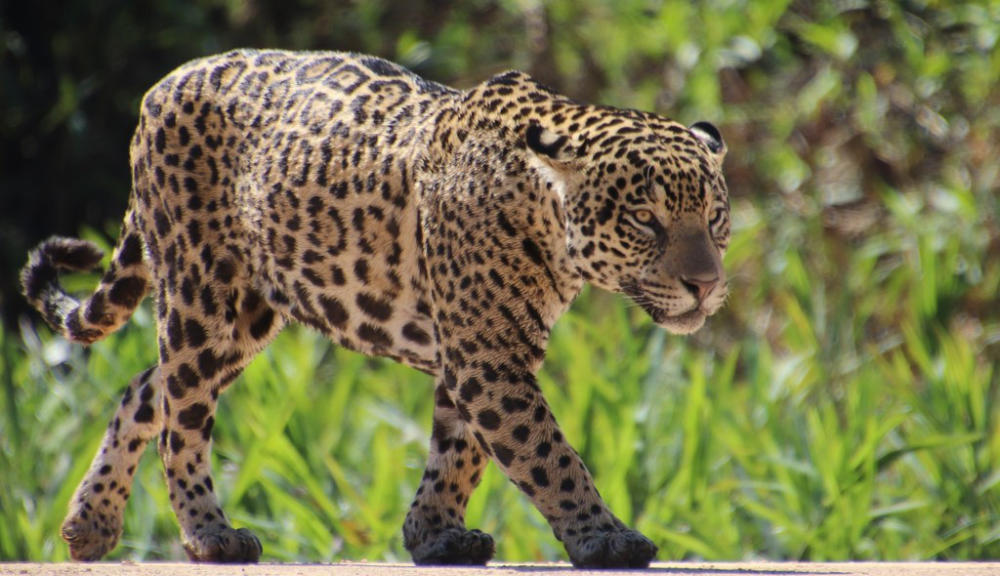
Often, jaguars are mistaken for leopards, but they are quite distinctive at a closer look. Their yellow or tan coat is highly unique and easily recognizable with black rosettes, which can even have spots inside of them. Some jaguars are melanistic, giving them a near-black appearance. Jaguars are muscular and robust, with thick, stout legs that are noticeably shorter than those of a leopard. Another distinction is their rounder broad head, with short rounded ears. They can grow up to 6 feet in length, not counting their tails, which can add another 2 feet. Males usually weigh between 100 to 250 pounds, while females are slightly smaller, ranging from 80 to 170 pounds.
Home Sweet Home
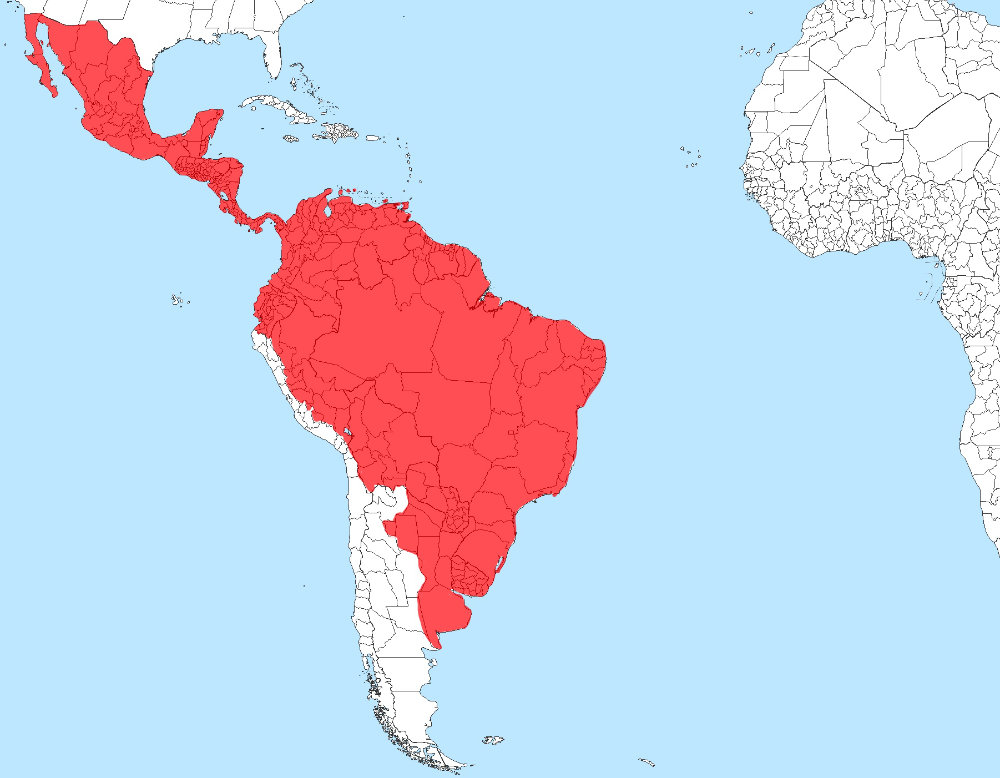
These adaptable cats thrive in a range of habitats, including rainforests, savannas, swamps, and dry forests. Jaguars are most often associated with the lush, tropical rainforests of the Amazon Basin, where dense vegetation and an abundance of water sources provide ideal conditions for hunting and shelter. They favor areas near rivers, lakes, and wetlands, where their swimming skills give them a unique hunting advantage.
What’s on the Menu?
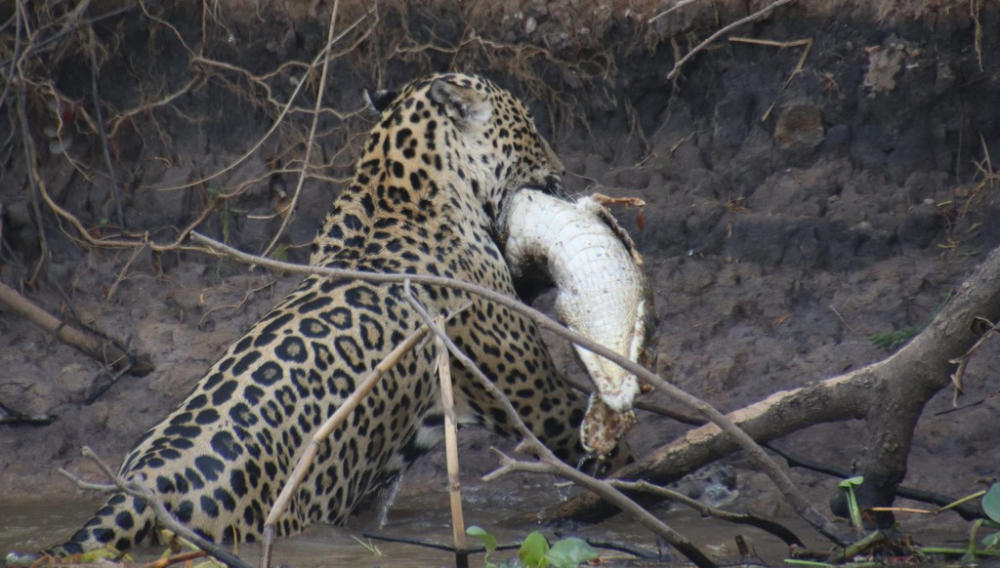
Jaguars are apex hunters with the most powerful bite among all big cats. They will eat almost anything that presents itself, from smaller animals like armadillos and birds to large mammals up to four times their size, like deer and buffalo. Their incredible bite force even makes them capable of taking down armored animals like caimans and tortoises. What’s more, Jaguars are known for their “crushing bite” technique. Instead of biting the throat like other big cats, they bite straight through the skull of their prey—one powerful chomp! They’re also expert climbers and swimmers, making them versatile hunters on land, in trees, and even underwater.
Master of Stealth and Camouflage
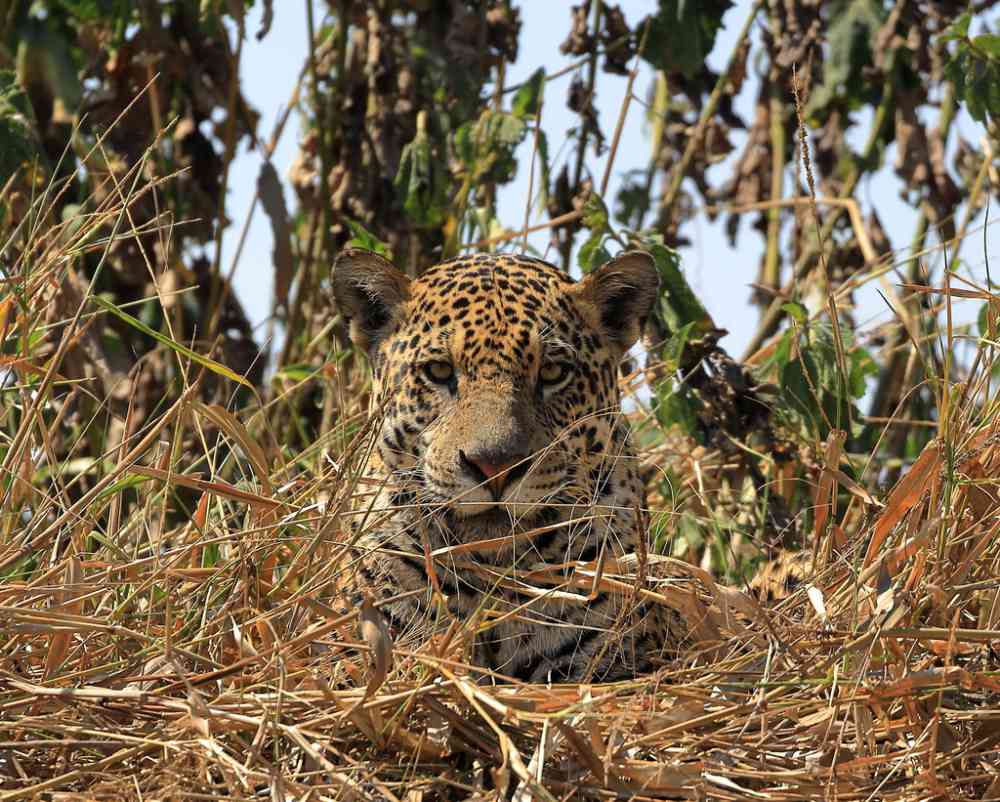
Jaguars are extremely elusive, solitary, and territorial cats. While active during the day, they much prefer to hunt under the cover of night. Their territory can span hundreds of square miles. Combine that with their perfectly camouflaged coat, and it gives you an inkling of an idea of just how easily they can stay hidden. Their stealthy nature has surrounded them with countless myths and stories across Indigenous cultures as mysterious spirits or guardians of the jungle. The Tupí-Guaraní tribe gave them their name yaguar, meaning “he who kills with one leap,” emphasizing their incredible hunting skills and mystery.
Jaguar Families

Jaguars can mate year-round, but breeding often peaks during the wet season. After about 100 days of gestation, females give birth to one to four cubs. These cubs are born blind and rely heavily on their mother for survival during the first few months. Young jaguars stay with their mothers for up to two years before venturing out on their own. Jaguars typically live 12–15 years in the wild and up to 20 years in captivity.
5 Fun Facts About Jaguars

- A Name with Power: The word “jaguar” comes from the Indigenous word “yaguar,” which means “he who kills with one leap,” emphasizing the jaguar’s incredible strength and hunting prowess.
- Jaw Power: Jaguars have the most powerful bite force of any big cat relative to their size. This allows them to crush bones and pierce the shells of turtles and the skulls of their prey with ease.
- Lone Wanderers: Unlike lions that live in prides, jaguars are lone hunters. They spend most of their lives alone, coming together only for mating.
- Swimming Cats: Jaguars love the water and are often seen swimming in rivers and lakes. This unique trait helps them catch fish and other aquatic animals.
- Nature’s Ninjas: The jaguar’s coat is perfectly camouflaged for their forest habitats. The rosette patterns blend seamlessly with the dappled light of the jungle, making them nearly invisible to prey and potential threats.
Threats to Their Survival

Despite their adaptability, jaguars are listed as Near Threatened on the IUCN Red List due to ever shrinking territories. Their range these days is only half of their historical range. It is estimated that there are about 174,000 jaguars remaining in the wild, with half of them in Brazil.
Significant threats are:
- Habitat loss due to fragmentation and deforestation for agriculture and cattle ranching
- Poaching for their fur
- Human-wildlife conflict
- Illegal wildlife trade
Efforts to Save the Jaguar
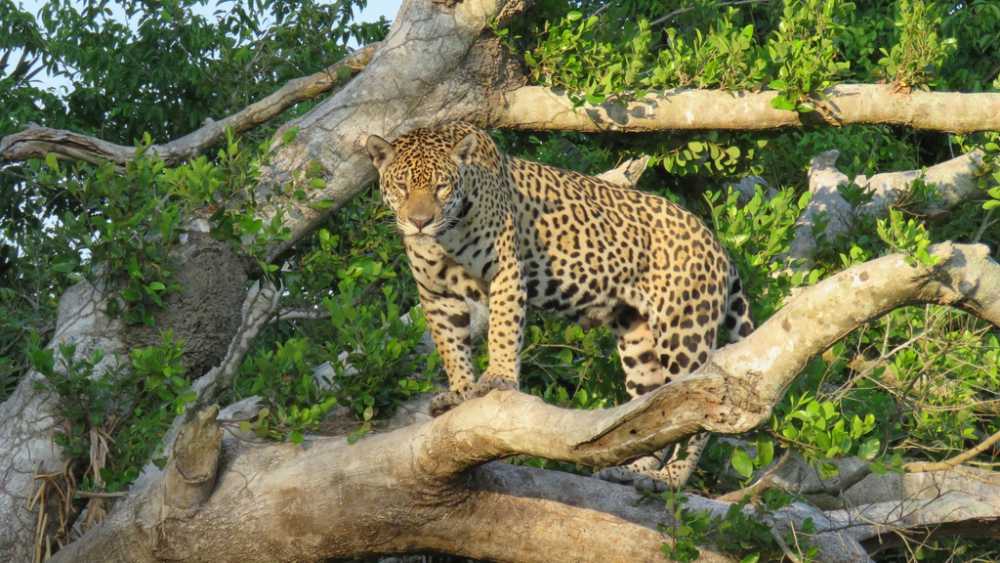
Conservation efforts focus on habitat preservation, establishing wildlife corridors, and reducing human-jaguar conflicts. Organizations like the World Wildlife Fund (WWF) and Panthera collaborate with governments and local communities to protect jaguar habitats and promote coexistence. These efforts are crucial for ensuring the long-term survival of jaguars in the wild.
Here are a few things YOU can do to help as well:
- Donate to charities with a focus on conservation. Some include: International Union for Conservation (IUCN), World Wildlife Fund (WWF), and Panthera. These organizations are out in the field protecting forests, fighting poaching, and spreading knowledge to communities.
- Shop at Artsefact: Part of all proceeds go towards wildlife and habitat conservation.
- You can also take a more hands-on approach in the field, by participating in anti-poaching patrols, habitat restoration, or monitoring the population of the habitats.
- You can also OWN a jaguar (ethically of course), through a symbolic adoption, which allows you to contribute to conservation efforts. The funds raised will go towards habitat protection and research.
- Try to avoid products linked to deforestation, and purchase products that are certified as sustainable, such as FSC-certified wood and paper products, which help lower the demand for deforestation in jaguar habitats.
- Use your social media presence to raise awareness on the issues the jaguars are facing.
Jaguar Fact Sheet!
Would you love to have all the info compact on a factsheet? Sign up for our e-mail Newsletter to unlock it!
Resources
whttps://www.nationalgeographic.com
https://www.youtube.com/WWF (worldwildlife.org)
https://www.iucnredlist.org/species/15953/12379143610023718
https://panthera.org/cat/jaguar

